
THE BACK STORY
Returning for his fourth time in as many years, UNC-CH Senior Lecturer Jock Lauterer is documenting a whirlwind two-week teaching gig to four cities in China where he will be advising community newspaper start-ups and helping to launch a community journalism program at a university in Foshan in the southern province of Guangdong. His latest book, the revised fourth edition of “Community Journalism: Relentlessly Local,” was published last summer in Mandarin. This blog is written expressly for his photo and community journalism students back at UNC-Chapel Hill, with whom he will be Skyping later in March.
In China they have an expression for doing things for show, just to look good, versus doing something for altruistic, internal or personal reasons.
For their metaphor, they use a coat: The outside of the coat is the “face side,” the surface only, that which the world sees — while the inner side is the “lining,” the part not seen, the one that matters, and is closest to the heart.
Today would be a day about the lining.
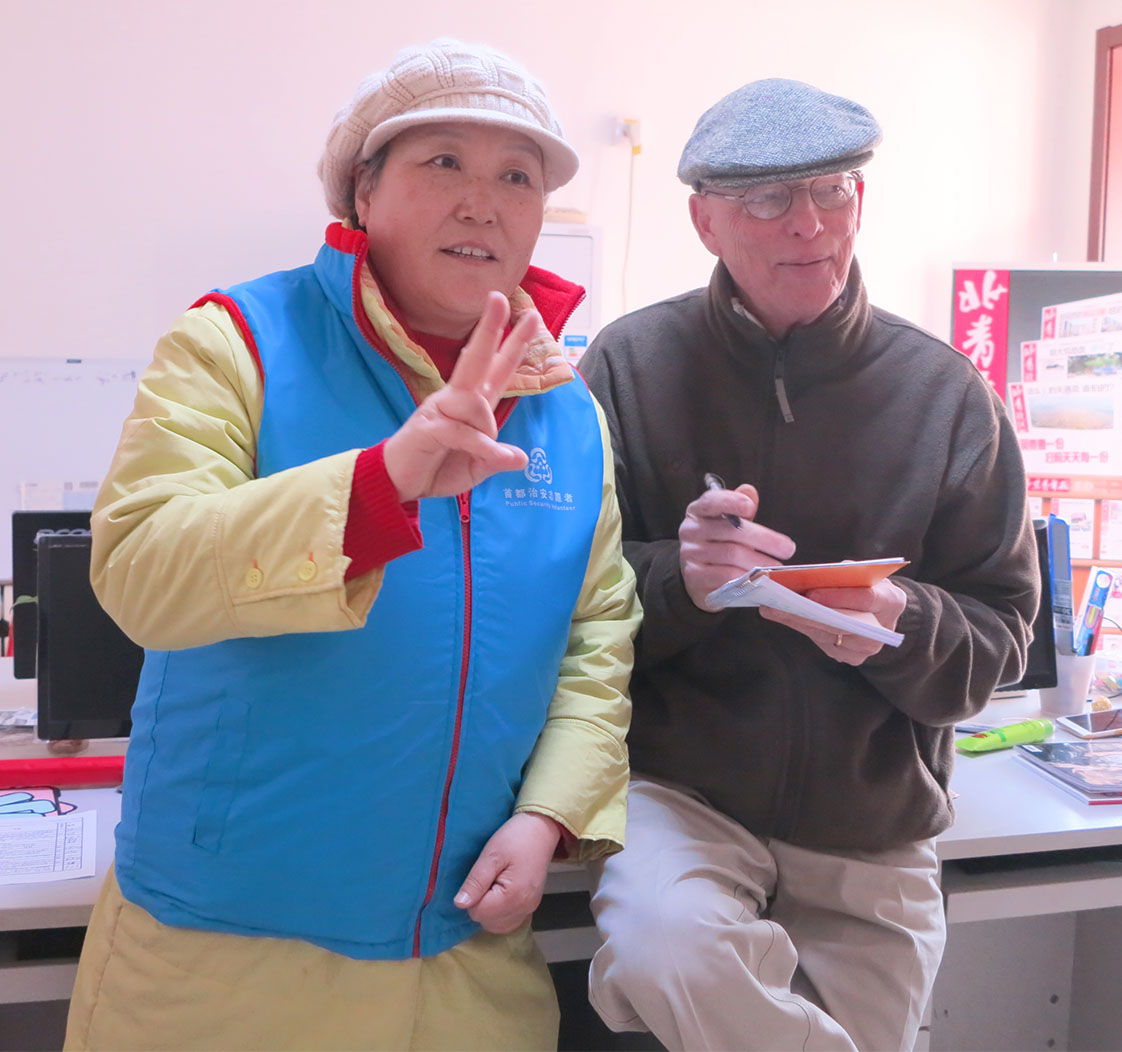
Boots on the ground; feet on the street
For weekly newspapers the world over, Wednesdays are the same. It is delivery day.
In a poorly heated office in a northern suburb of Beijing, the small staff of the Tian Tong Yuan hands out bundles of the latest edition to their delivery team.
The staff, mostly young women in the 20s, is led by their no-nonsense director, Zhang Lin, who has mobilized a small army of 20 volunteers from the community to deliver the 50,000 copies of the paper.
The weekly is only nine months old, one of 29 new start-ups launched by their flagship mother newspaper, the Beijing Youth Daily, throughout the suburbs of this sprawling city of 22 million.
In spite of my fingers being too cold to take notes in this frigid office, I am warmed by the concept of a newspaper enlisting community volunteers, most of whom are retirees who want to stay active and give back to the neighborhood.
“I like to do something for the community,” retired engineer Wang Hue Wen exclaims with genuine enthusiasm when she comes to pick up her bundles. I watch with admiration as the elderly Gao Cheng Ping loads papers on his antique bicycle, waving cheerfully as he pedals off down the alley.
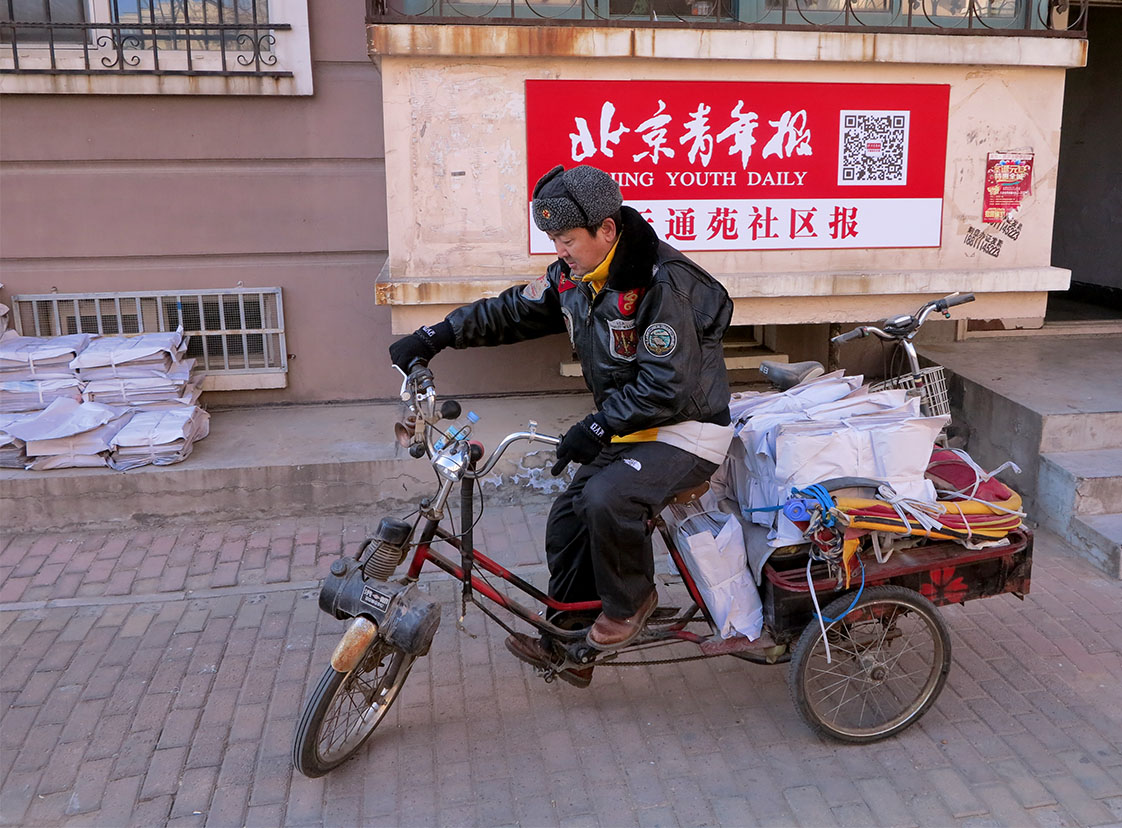
This is the NPR model on steroids, and I can’t fathom why more American newspapers haven’t cashed in on such an obvious community resource. While the paper’s volunteers do get a tiny sliver of cash for each paper they deliver, I’m told they do it more for the “lining.”
Assistant director Laura Wang, who doubles as photographer, says the pittance the volunteers earn is not the most important thing.
“Maybe we give them a chance to get into their communities again,” she explains, “to feel connected with society.”
At a nearby marketplace, we get to watch Zhang Xiao Hui in action.
A one-woman PR department, this housewife/mother of two is handing papers to every passerby with a friendly hello, and she seems to know everyone, as she keeps a constant stream of greetings going the entire time I was watching and taking photos.
Prof. Chen Kai tells me, “Those 20 volunteers are the reporters’ windows to the community.”
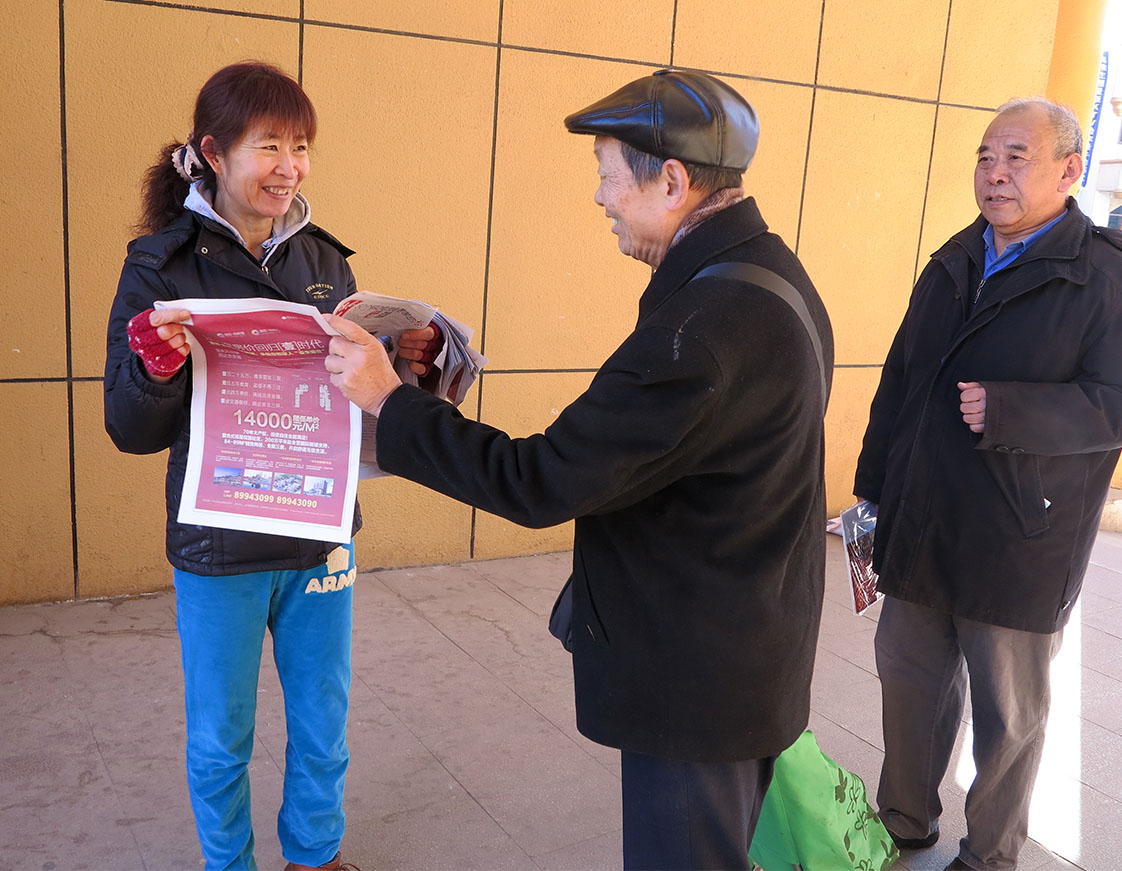
Coincidentally, I overhear an elderly man, accepting a paper from Mrs. Zhang, sternly advising her to tell the reporters to do a story about the terrible potholes in their neighborhood streets.
Hearing this, staffer Laura nods, “See, the connection between the volunteers goes both ways.”
The Most Essential Characteristic
The concept and practice of community journalism, as we know it in the U.S., is a new thing in this old land.
So it’s heartening to hear a Chinese journalist, like 26-year-old assistant director Laura Wang put it so succinctly: “The national newspaper will cover the whole city, but our newspaper covers just this community,” adding, “I live in this community. The person I interview will be my neighbor. I will see him tomorrow after tomorrow after tomorrow.”
Prof. Chen Kai chimes in, “It’s about making life easier…the most essential characteristic of community journalism is to help each other.”
(Editor’s Note: This is China, so we’re not going to worry about the watchdog thing just yet, OK? Later next week you’ll get to meet Editor Guocheng Li, who told me last year: “I’m not a lapdog or a watchdog – I want to be the guide dog!”)
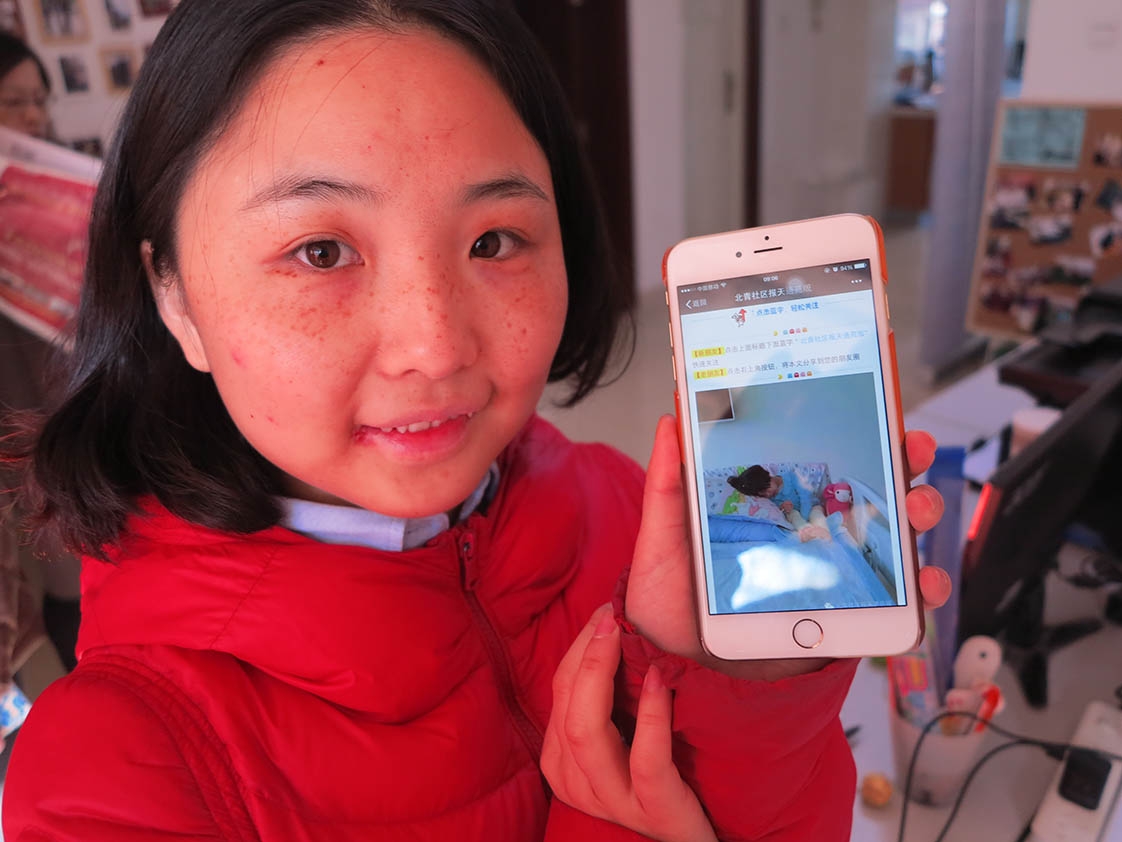
And helping is something the Tian Tong Yuan newspaper seems to be very good at. Last week on the Chinese version of Twitter, one of the reporters spotted a mother’s plea. Her 4-year-old daughter had been diagnosed with leukemia and the family was having trouble with the medical bills. In response, the WEEKLY mounted a public fundraising campaign, headlined with a front-page story about little Xi Xi. In just four days, the paper’s campaign had raised 90,000 Yuan.
This morning they take me to the local mall, where they have set up a fundraising booth, which is doing a brisk exchange with shoppers who are touched by the front-page story about the little girl fighting leukemia.
Then I notice the photographer, an elderly man clad in classic photo-garb wielding a big black Canon 5D Mark III like a pro. To my surprise I am told that he is one of the paper’s volunteers. A retired free-lance photographer, Lu Gang, donates his professional services to the paper for a very personal reason. He wanted to give back to the community, yes — but additionally Mr. Lu felt a debt of gratitude to the newspaper.
(Although he spoke no English, and I no Mandarin, we both spoke an international language — photography — and so Mr. Lu and Mr. Joke connected immediately.)
But on the big question, as to why he volunteered for the paper — I had to ask Prof Chen Kai for help.
In response, Mr. Lu removed a small photograph of his wife from his breast pocket, and cradling it in his hands like a small bird, talked non-stop for 10 minutes.
Here’s what he told us:
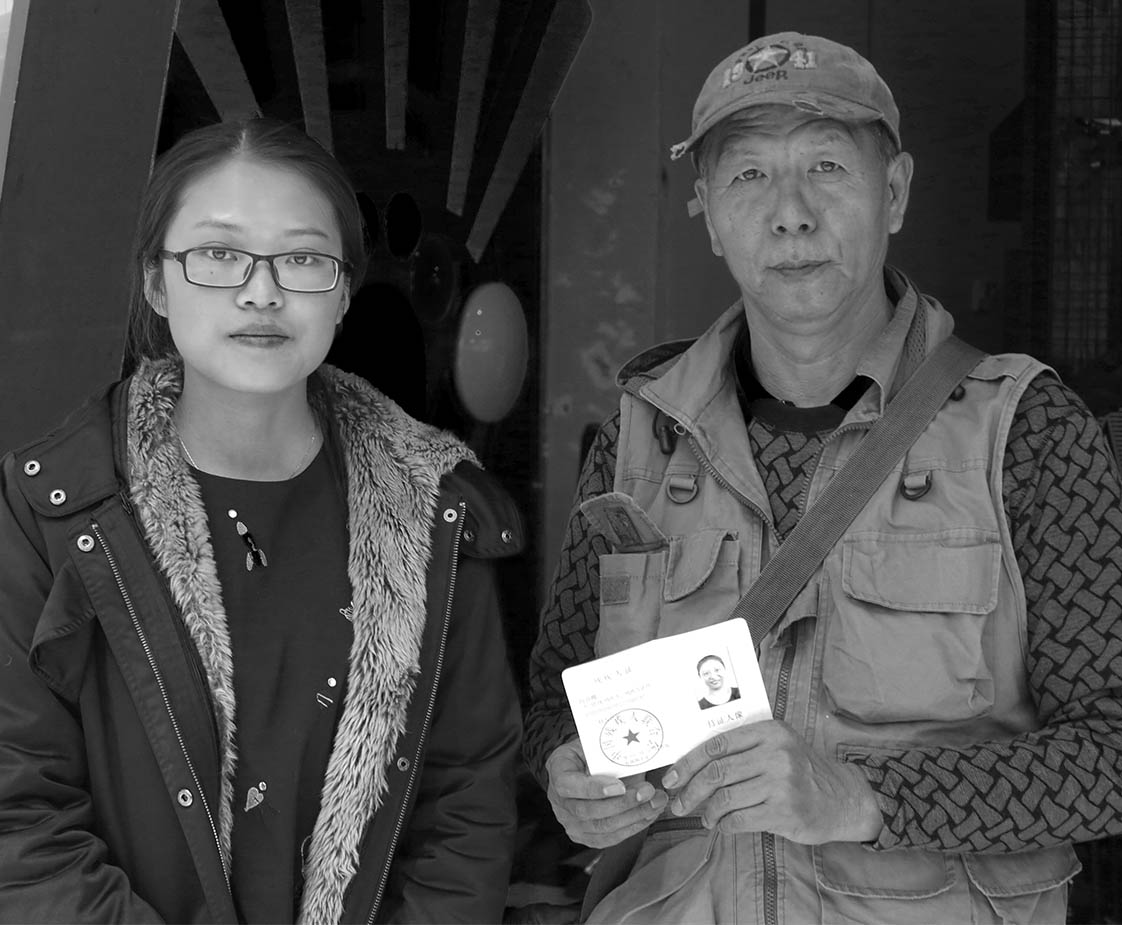
Mr. Lu’s Story
He was brought up in one of the tight-knit traditional “hutong” neighborhoods of Beijing and therefore knew what a “community” was. So when he and his wife moved to this neighborhood, he said he wanted to do something “reciprocal.” His word exactly.
But then, five years ago everything changed when his wife came down with ALS, also known as Lou Gehrig’s disease. For years, he said, no one in the neighborhood knew of their plight, until finally one neighbor did find out, became concerned and posted a notice in social media, asking for volunteers to help keep Mrs. Lu company.
Mr. Lu told us he was not happy with this — nor was he happy when a reporter from the newspaper, Wang Li Juan, contacted him asking for an interview. In fact, he conceded he was angry.
Undeterred, the reporter visited the Lu’s four times — even brought flowers.
“I was rude the first two visits,” admitted Mr. Lu with chagrin. He said had a bias against reporters, thinking that Li Juan was just like a big-city reporter who would want to make a name for herself by sensationalizing the sufferings of his family. But Li Juan won them over with her genuine compassion.
“I apologized,” he told us. “Now we are friends.”
Reporter Li Juan’s subsequent front-page story on the Lu’s situation changed things. Neighbors volunteered to help with Mrs. Lu’s care, and Mr. Lu gained a new family.
So many people came forward, he said, “that’s what community should be like.”
As I heard Mr. Lu’s story, and watched the four young women staffers of the Tian Tong Yuan newspaper listening respectfully, I got the distinct impression that he regarded them not as reporters or journalists — but as family. And in spite of my lack of Mandarin, I bet I’m not far off the mark there.
Later, when I asked reporter Li Juan to pose with Mr. Lu for a photograph, she demurred, insisting she didn’t deserve the credit. Her refusal was more like a declaration, or even a lesson.
“It was a team effort,” she said, “Take a photograph of the whole team.”
Now, that’s what I call a silver lining.


